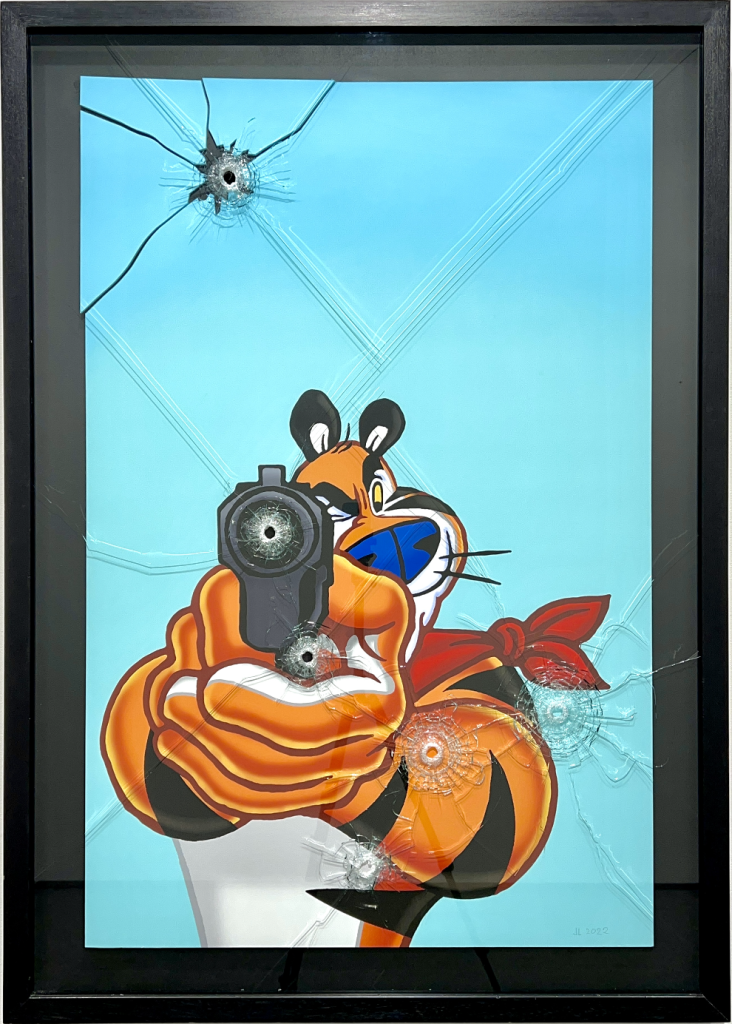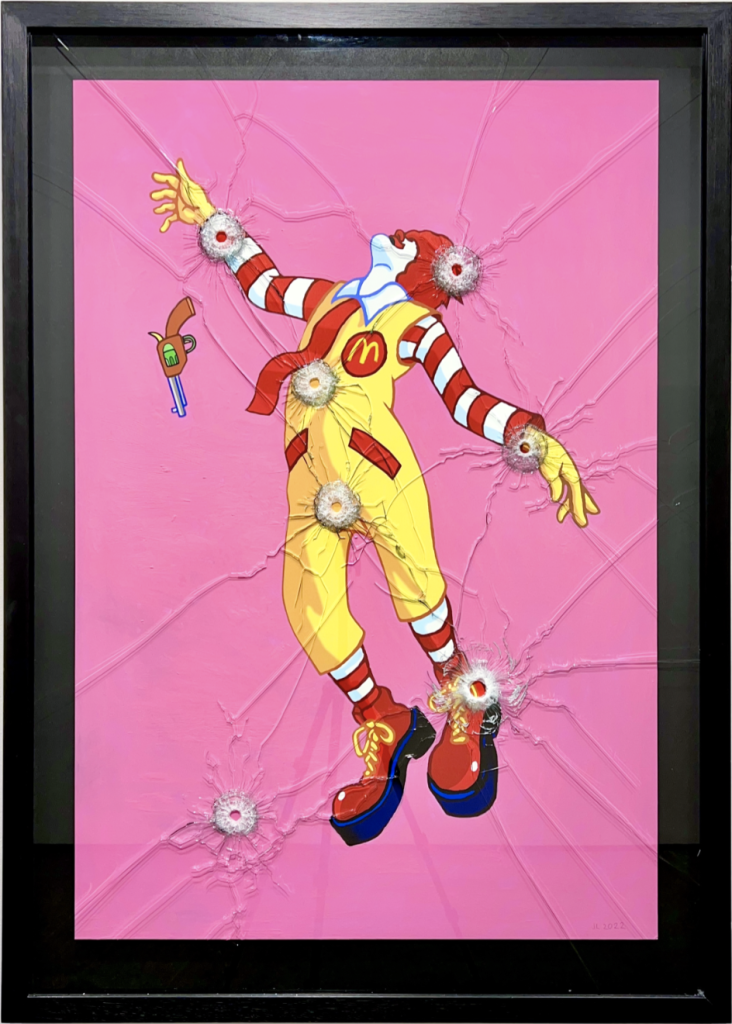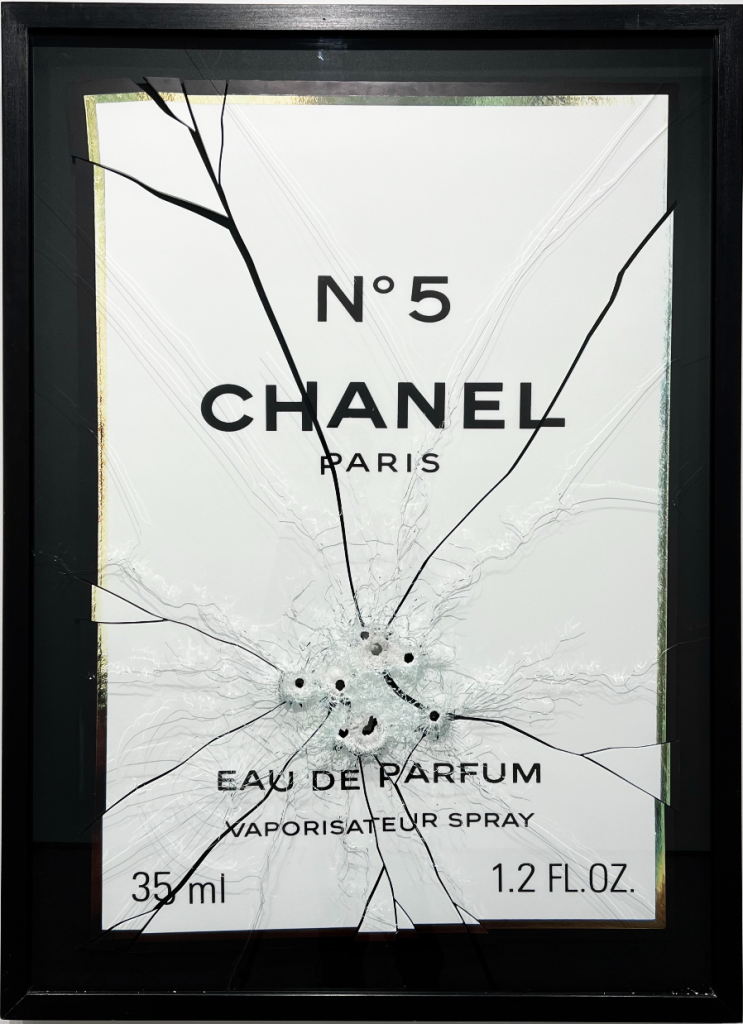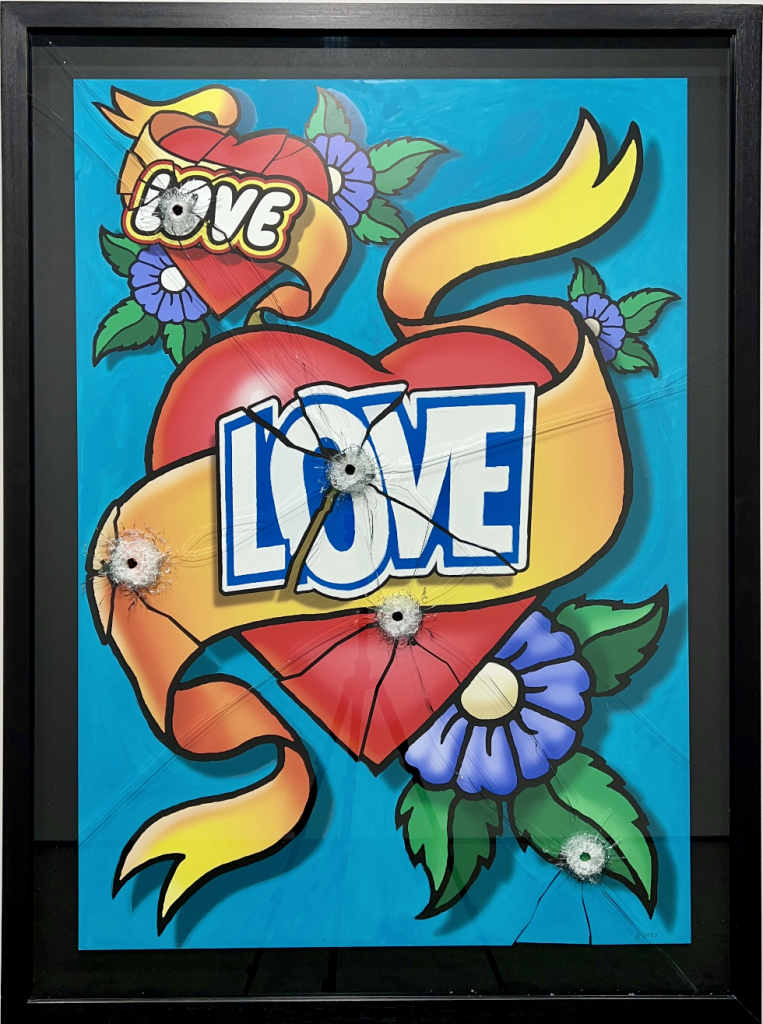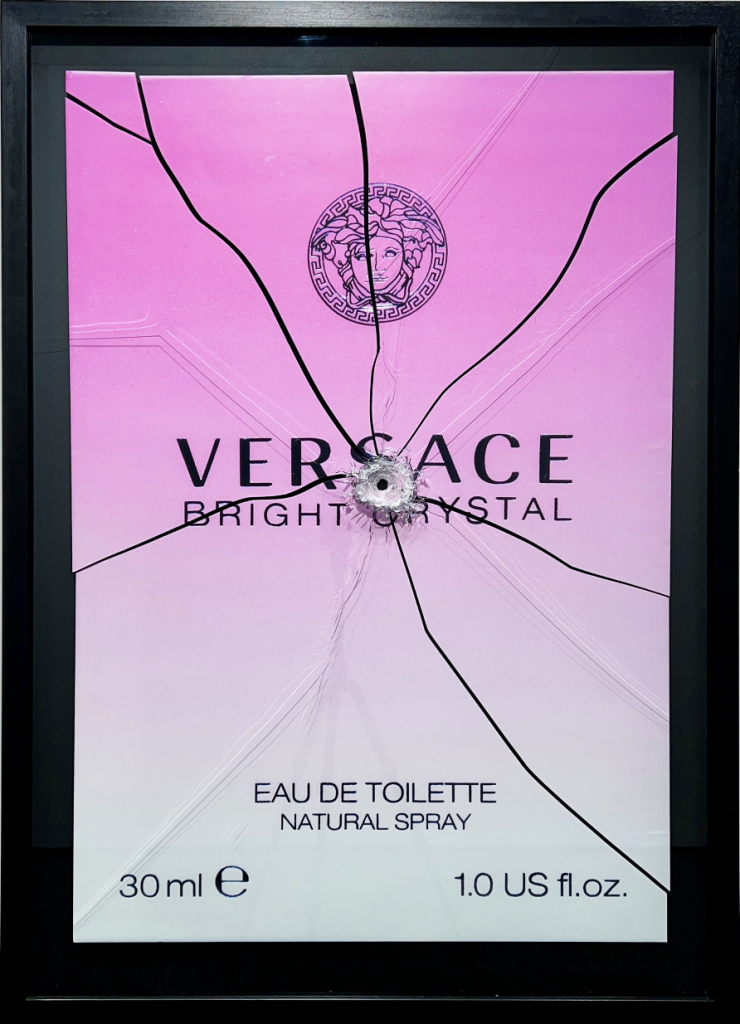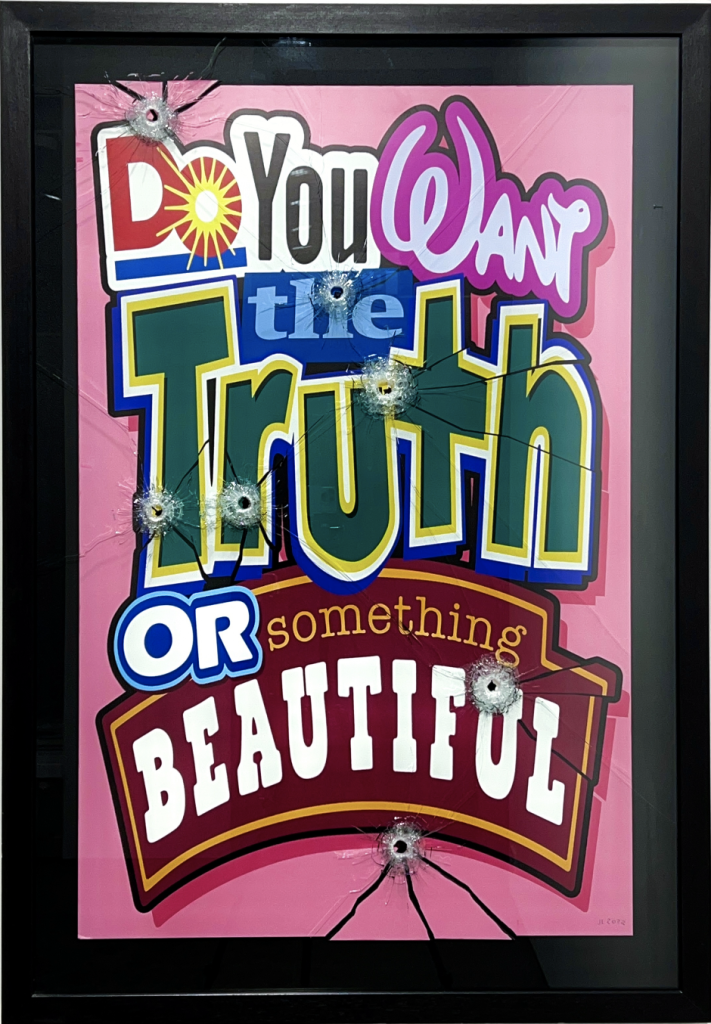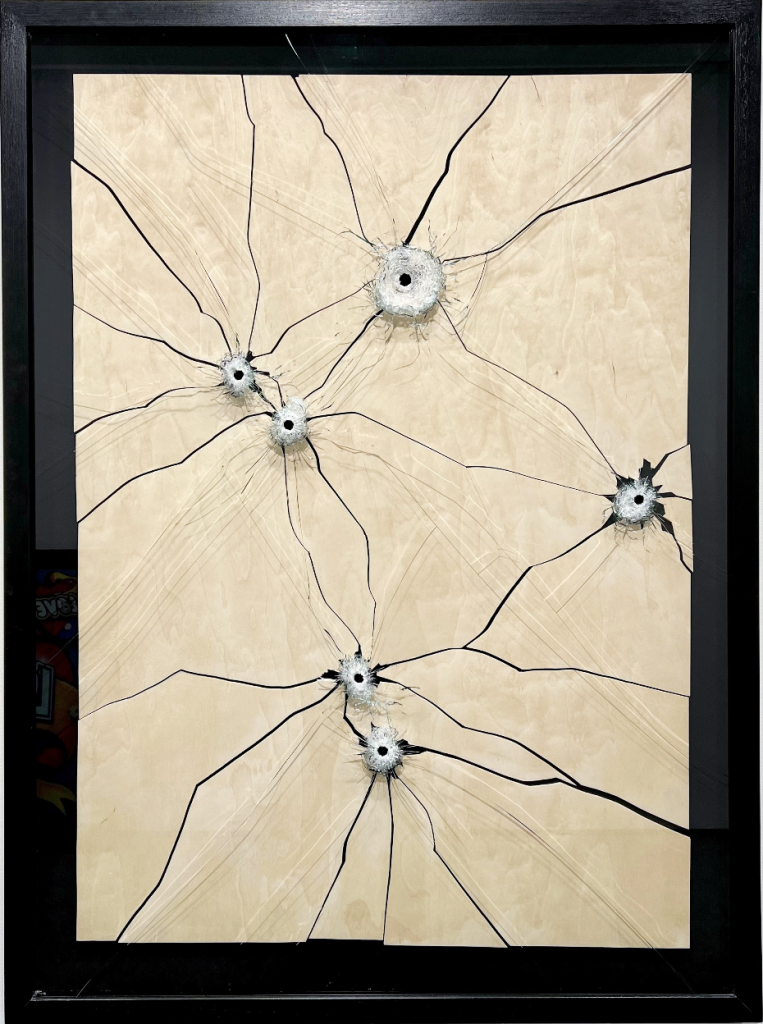May 4–June 8, 2025
The War of All Against All
Jani Leinonen
May 4–June 8, 2025
Jani Leinonen
May 4–June 8, 2025
May 4–June 8, 2025
January 18-February 9, 2025
Riikka Hyvönen, Erwin Laiho & Jani Leinonen
Levels
January 18-February 9, 2025
Riikka Hyvönen, Erwin Laiho & Jani Leinonen
Text by Dr. Aura Seikkula
Several fields of inquiry structure their models for understanding human behavior, systems, or phenomena across multiple levels. Jurgen Habermas argues that modern societies risk colonization of the lifeworld when systemic forces like markets or bureaucracy overshadow rationality of communication. An advocate for democratic ideals, Habermas emphasizes communicative action as a means to reconcile our lifeworld with societal complexities. At Zetterberg Gallery, artists Riikka Hyvönen, Erwin Laiho, and Jani Leinonen critically explore the colonization of various contemporary lifeworlds through their core practices.
The communicative advocacy Habermas calls for is vividly expressed in Jani Leinonen’s text-based works, which often pose direct ethical questions or critiques, such as exposing the disparity between corporate altruism and exploitative practices. These textual elements act as calls to action, harnessing the persuasive power of language to expose its influence in shaping perceptions and upholding power structures, while encouraging viewers to reflect on their values and reconsider their actions.
Leinonen’s alterations reveal the persuasive techniques embedded in advertising and corporate communication, laying bare their manipulative potential. Leinonen engages viewers using direct pronouns in a style reminiscent of Barbara Kruger. Through “I,” “You,” and “We,” he employs provocative slogans and recontextualized corporate taglines to expose the hypocrisies and contradictions within systems of power. By combining blunt text with bold visuals, such as logotypes, Leinonen heightens the impact of his critique through stark and striking contrasts.
I am drawn to Barbara Kruger’s definition of her work as one that “joins the seductions of wishful thinking with the criticality of knowing better.” Similarly, Leinonen carves out a distinctive space with his playful yet incisive critique of morality and commodification. Through humor and irony, he tempers the intensity of his messages while maintaining accessibility, encouraging reflection on societal norms, corporate altruism, and institutional complicity in perpetuating inequality.
With her #Boom! #Pow! #Zap! Well, This is One Hell of a Derby Kiss Riikka Hyvönen looks into another lifeworld by transforming the bruises – kisses – of roller derby athletes into bold celebrations of resilience and empowerment. Through hyperrealistic painting, sculpture, and pop-art-inspired installations, she reframes these marks—often seen as imperfections—into emblems of strength, camaraderie, and individuality. Hyvönen’s use of materials like leather and glitter gives the bruises a glamorous, three-dimensional quality, blending humor and critical commentary. Her works challenge conventional beauty standards, reclaiming stigmatized parts of the body as symbols of pride and power.
By spotlighting the physicality and defiance of roller derby culture, Hyvönen addresses societal discomfort with women’s strength and violence, reframing it as empowerment. The monumental scale of her pieces mirrors the unapologetic spirit of her subjects, bridging the art world and subcultural sports while celebrating community, identity, and lived experience. Her work bridges subcultural practices with broader societal narratives, encouraging viewers to engage critically with issues of gender, power, and identity, thus fostering communicative action within the lifeworld.
Erwin Laiho’s Not Enough Disk Space (Astro Laser) is a sculptural element combining a diamond cutting wheel, a modified 24” iMac, and laser-engraved glass to explore the fragility and new materiality of digital technology highlighting the consequences of e-waste, carbon emissions, and ethical concerns around resource extraction, as well as its embeddedness in global systems of production and consumption.
Through its materials and layered symbolism, Laiho critiques obsolescence and the hidden costs of digital culture. By transforming a functional object into a reflective artifact, Laiho invites viewers to reconsider the impermanence and consequences of our reliance on technology. The modified iMac juxtaposes sleek consumer tech with its inherent limitations, while the engraved glass adds a tactile, handmade element that contrasts with the mass-produced nature of the object. The diamond cutting wheel draws attention to the intersection of creation and destruction, emphasizing the physical impermanence of seemingly enduring digital devices.
Here the title Not Enough Disk Space references a common digital error, encapsulating anxieties around data storage and technological obsolescence. Astro Laser evokes futuristic ambition, contrasting humanity’s cosmic aspirations with the mundane constraints of technology. This obsolescence reflects the ongoing colonization of the lifeworld, where constant innovation enforces cycles of consumption, transforming cultural practices, commodification of technology and human interactions into functions of economic systems.
Jani Leinonen
The War of All Against All
4 May– 8 June 2025
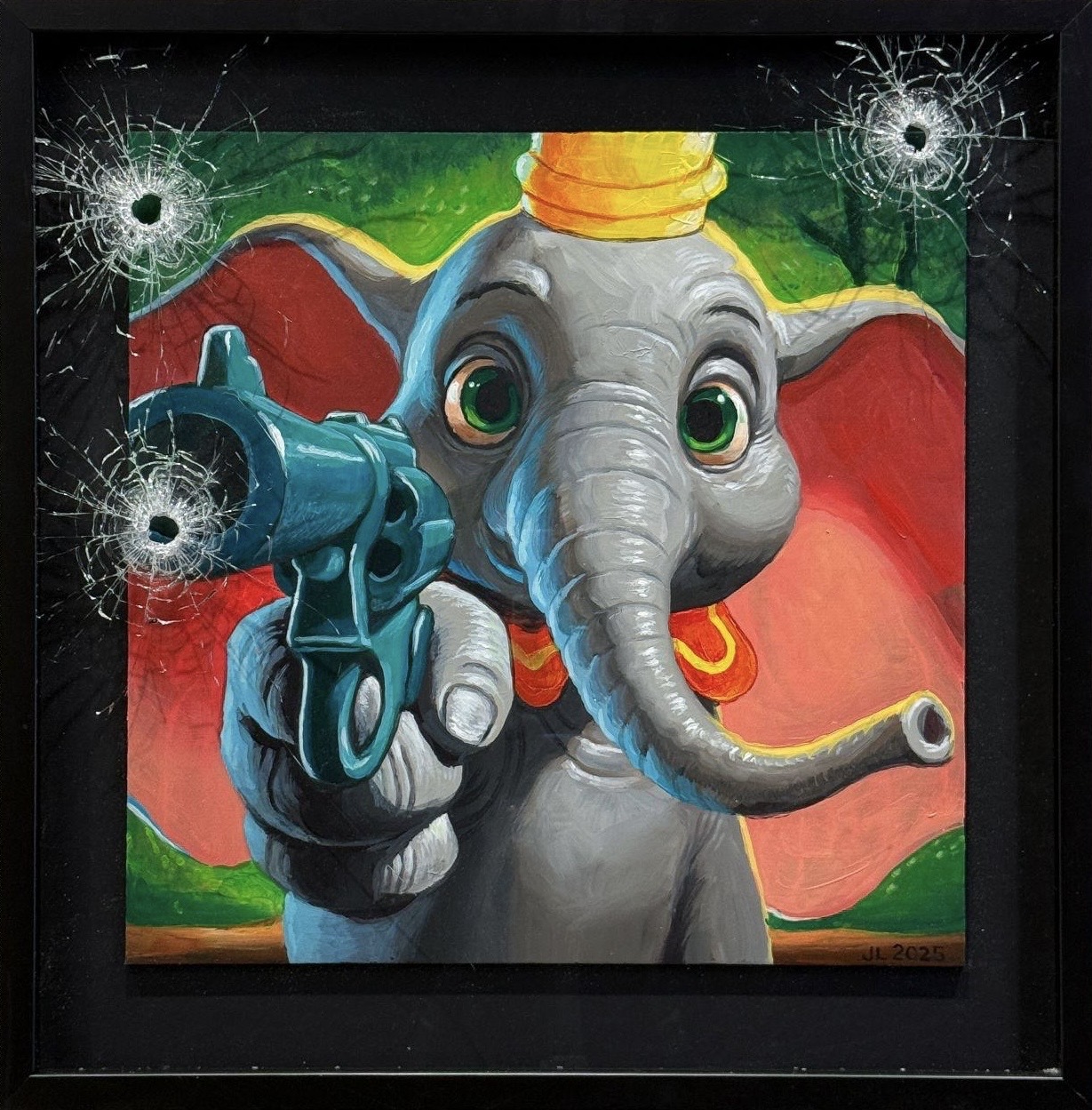
______________________________
Riikka Hyvönen
solo exhibition
September 13-November 13, 2024
Riikka Hyvönen, Mari Keto, Erwin Laiho, Jani Leinonen & Sampsa
Text by Dr. Aura Seikkula
Heraclius famously viewed the world as constantly in flux, always becoming but never being. His concept of metamorphosis is captured in his assertion that “everything flows” (πάντα ρει), reflecting his belief that change is the essence of existence and stability merely an illusion, emphasizing the relentless and fundamental nature of transformation in the fabric of reality.
At Zetterberg Gallery Metamorphose with works by Riikka Hyvönen, Mari Keto, Jani Leinonen, Erwin Laiho & Sampsa showcases how change and transformation are integral not only to understanding reality, identity, and existence but the needed for any contemporary society.
Entering the gallery a sculptural work, Cracking the Colours of Tradition (2024), by Riikka Hyvönen distinctively draws the lines of a vase. Hyvönen engages in a critical exploration of beauty through her expressive and thought-provoking examination of contemporary identity and its multifaceted representations. Historically, the vase has been metaphorically linked to femininity due to its form and function. The vase’s curvaceous shape and nurturing capacity evoke the female body, symbolizing both traditional ideals of feminine beauty and fragility, and the duality of femininity as a vessel for potential and a symbol of societal constraints. By doing so, Hyvönen challenges prevailing female stereotypes and cultural assumptions surrounding femininity, prompting a reevaluation of how these constructs are both perceived and perpetuated in society.
Erwin Laiho’s sculptures connect individuals to the vast economies and natural minerals behind modern technology, revealing the essence of digital devices. By disrupting familiar technologies, Laiho highlights the transient nature of our relationship with them and the deep geological origins of their materials. At the exhibition, Laiho presents 0 (Not Black Rock City) (2024) artwork embodying themes of technological decay, the fragility of modern civilization, and the dystopian future where once-advanced technology lies broken and repurposed. The shattered screens and deconstructed tech components convey the collapse of society’s digital age, while nanodiamonds in security nuts add a layer of lost opulence, now rendered useless, emphasizing the futility of past luxuries in a post-apocalyptic scenario.
The gallery space is dominated by Sampsa’s Kronos (2023). Sampsa is renowned for his politically charged art and active involvement in citizen initiatives. His work engages with social and political issues through provocative imagery and civic involvement, exemplifying a broader trend of artistic activism influencing the socio-political landscapes.
At Metamorphose, Sampsa draws contemporary relevance for the mythology of Cronos, the embodiment of time, through its profound thematic resonance with contemporary concerns. Sampsa’s reading of Cronos reflects societal anxieties about temporal pressures and endless productivity. Cronos’ mythological act of devouring his children symbolizes generational conflict and succession issues, echoing contemporary debates on intergenerational power dynamics and authority transfer. His tyrannical reign and eventual overthrow by Zeus also mirror ongoing discussions about dominance, control, and social revolution. In his seething work Sampsa merges the dynamic between processed food and popular culture within nationalism perpetuating broader socio-economic and homogenized cultural narratives while reinforcing nationalistic sentiments. Concurrently, this phenomenon contributes to globalized food production systems that marginalize traditional nutrients and undermine local food sovereignty.
Drawing upon cultural histories and pop culture, Mari Keto’s work critically explores the complex interplay between value and consumption. In the exhibition a pair of deer horns frame the hallway entrance creating a rite of passage proving one’s prowess. Deer horns, displayed as trophies, symbolize human dominance over nature, commemorate the hunter’s skill and status, and function as a visual representation of masculinity, power, and control over wildlife across various cultures, reinforcing social identity and values related to hunting heritage. Keto’s nuanced approach critiques contemporary society’s valuation practices, revealing tensions between material consumption and cultural significance, while challenging modern consumerism to prompt deeper consideration of the forces shaping our perceptions of worth.
Jani Leinonen, recognized for his provocative and playful critiques of capitalism and contemporary consumerism, challenges viewers to reevaluate contemporary perspectives by harnessing saturated elements of modern society, such as popular culture and corporate branding, to subvert and critique consumerist norms, dynamically transforming everyday economic and marketing phenomena into incisive satire. With The King (2024) Leinonen visualizes metaphoric statements, like “When the Ox enters the Palace he doesn’t become a King but the Palace becomes a Barn“. Instead of being elevated by their surroundings, the individual may transform those surroundings to reflect their own nature. In this case, the ox, denoting someone with limited refinement or sense, does not gain nobility or grandeur by entering the palace; rather, the palace itself is reduced to a barn, a reflection of the ox’s inherent qualities. Leinonen clearly critiques the assumption that mere exposure to prestige or luxury could fundamentally alter one’s nature, highlighting the persistence of intrinsic characteristics over superficial changes in environment.
Riikka Hyvönen, Jani Leinonen & Sampsa
February 15-March 17, 2024
Zetterberg Gallery
The group exhibition reflects upon iconic themes through the latest works by Hyvönen, Leinonen and Sampsa.
Extra Terrestrial
November 3 -December 3, 2023
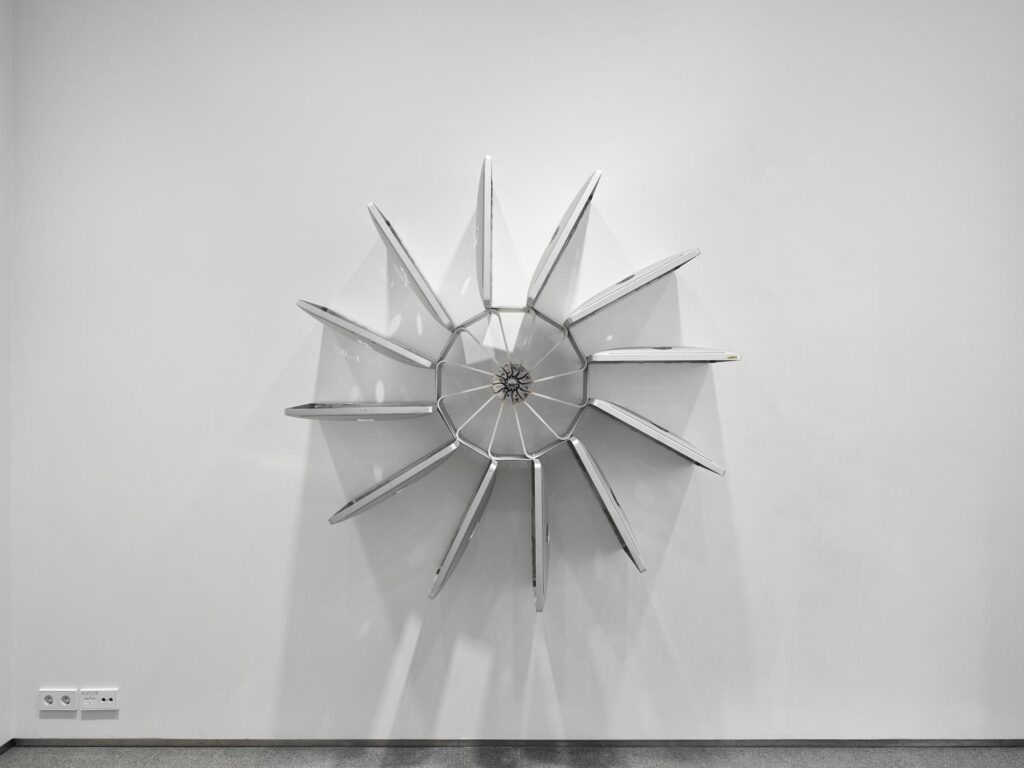
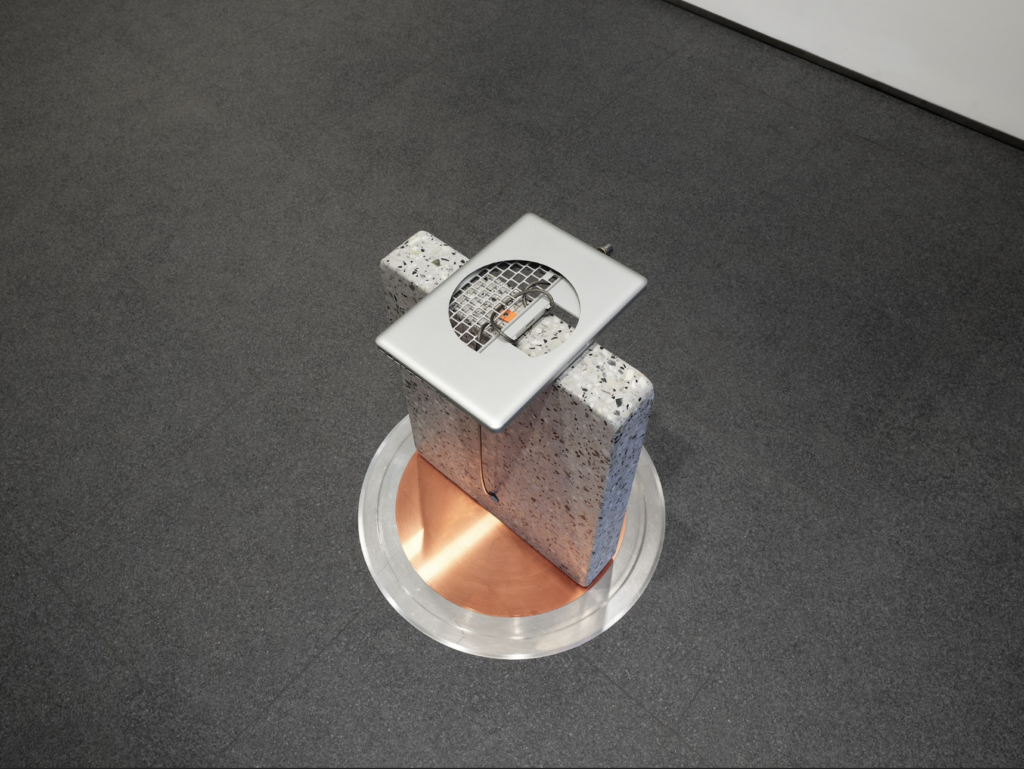
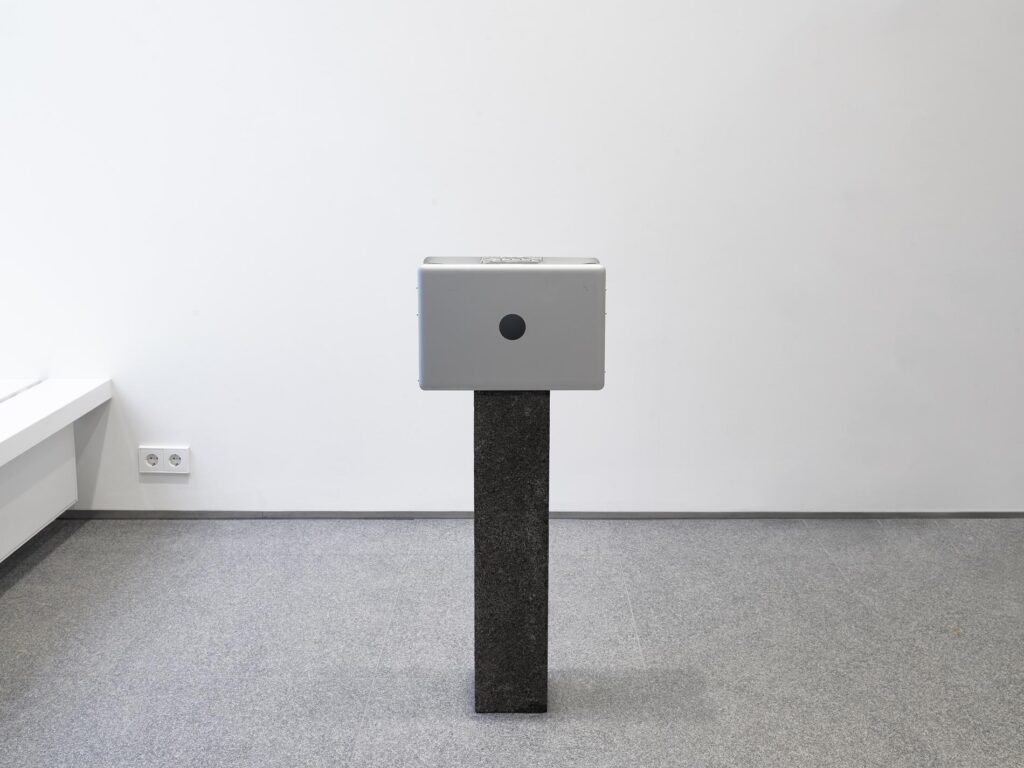
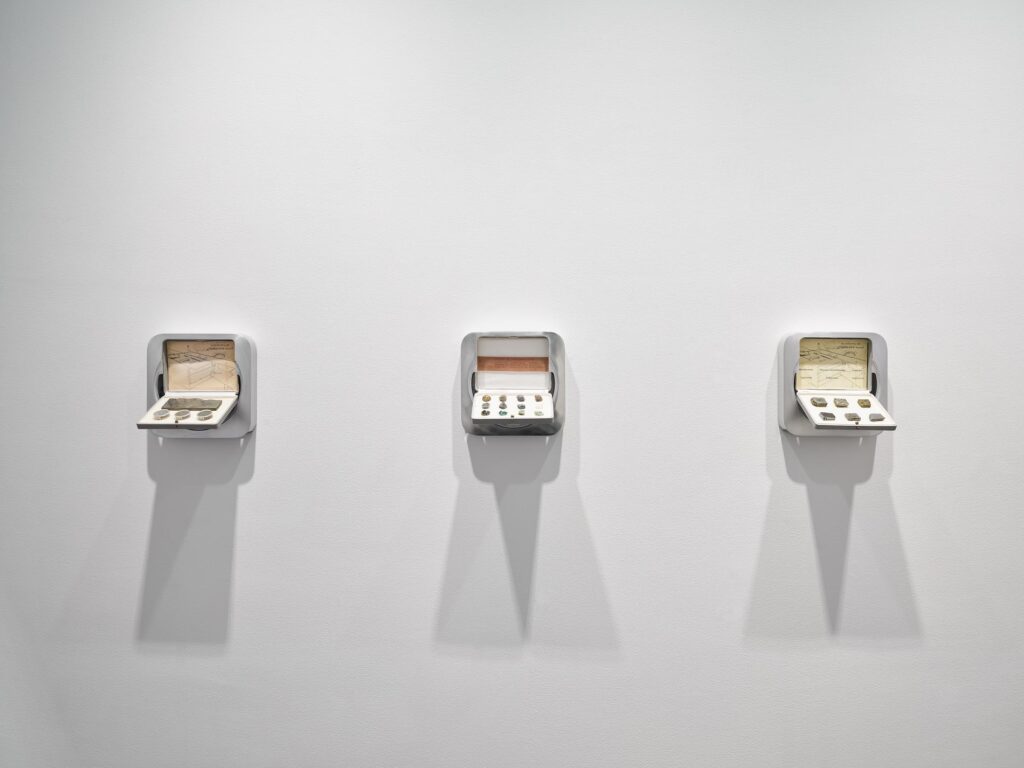
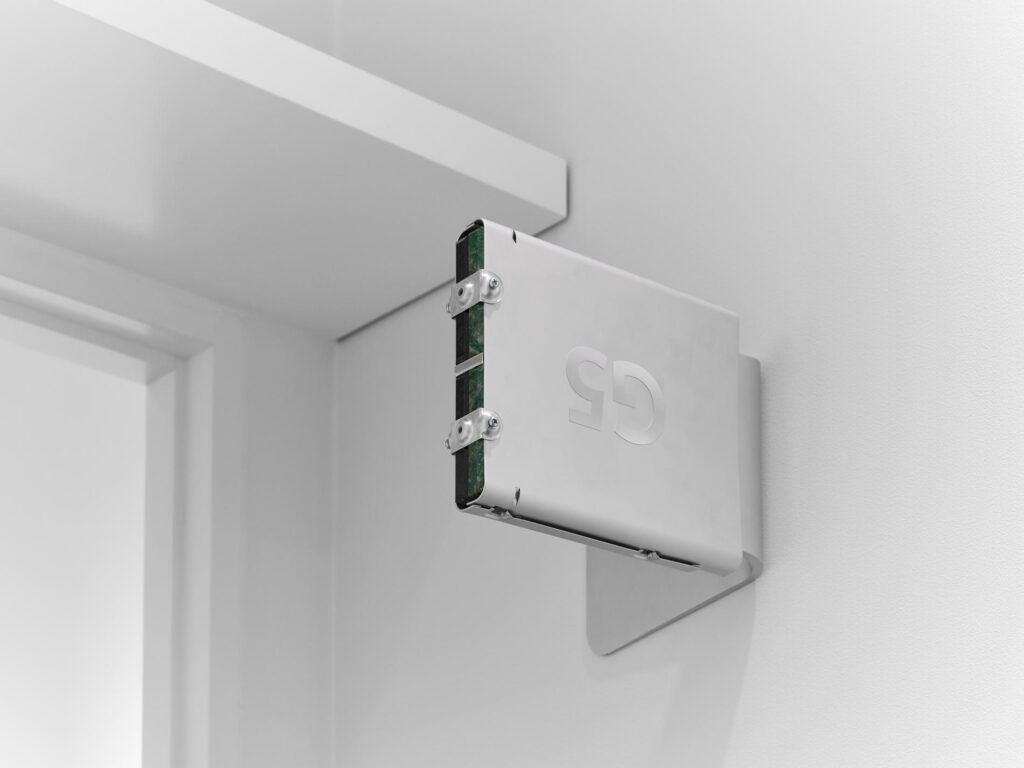
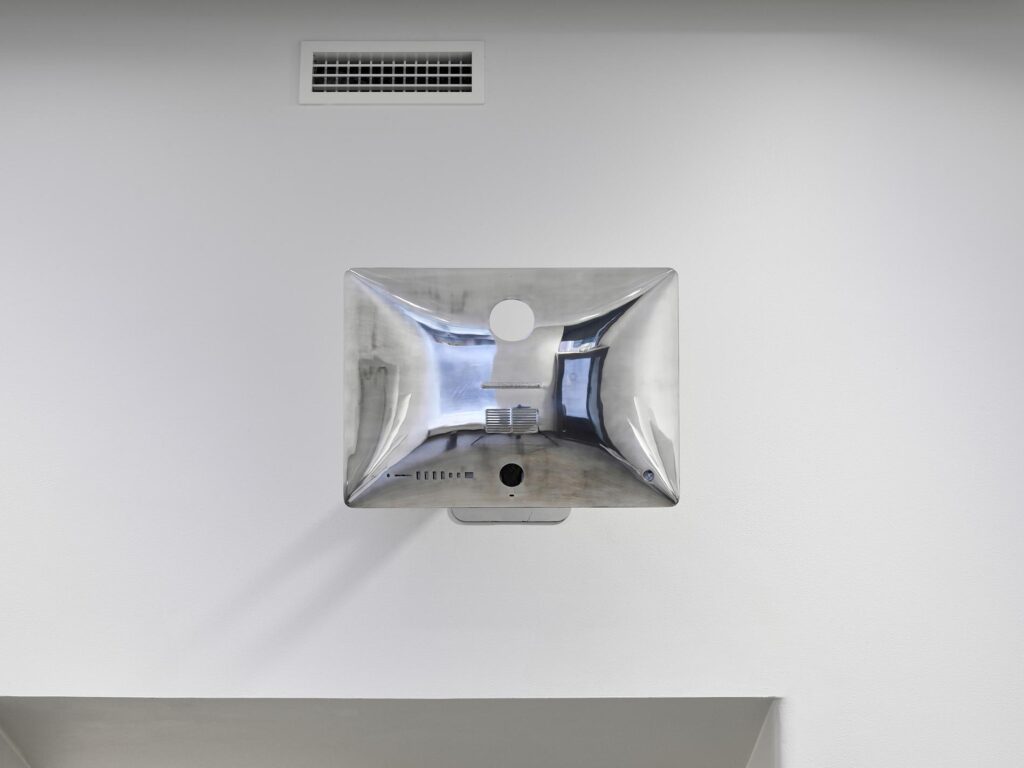
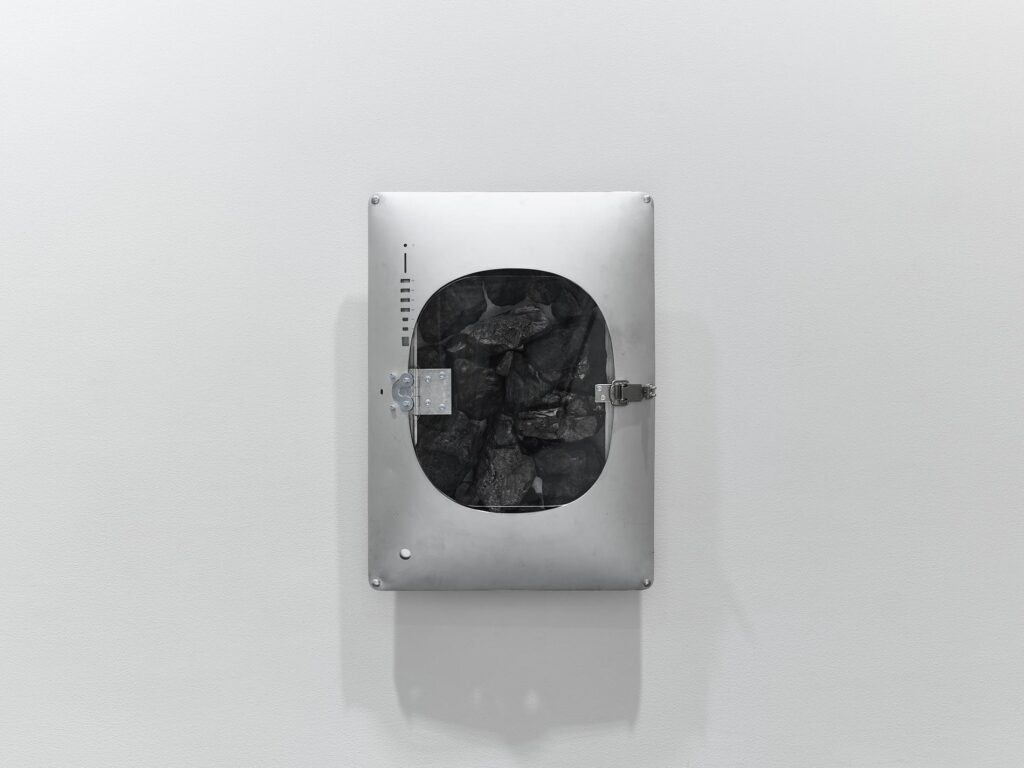
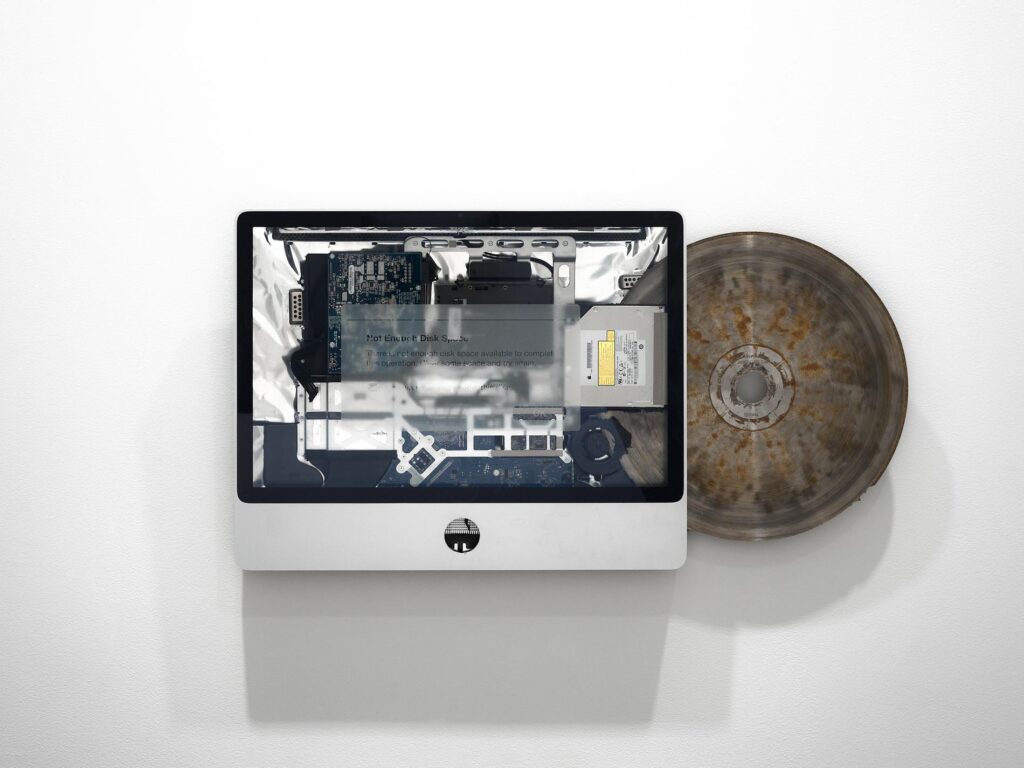
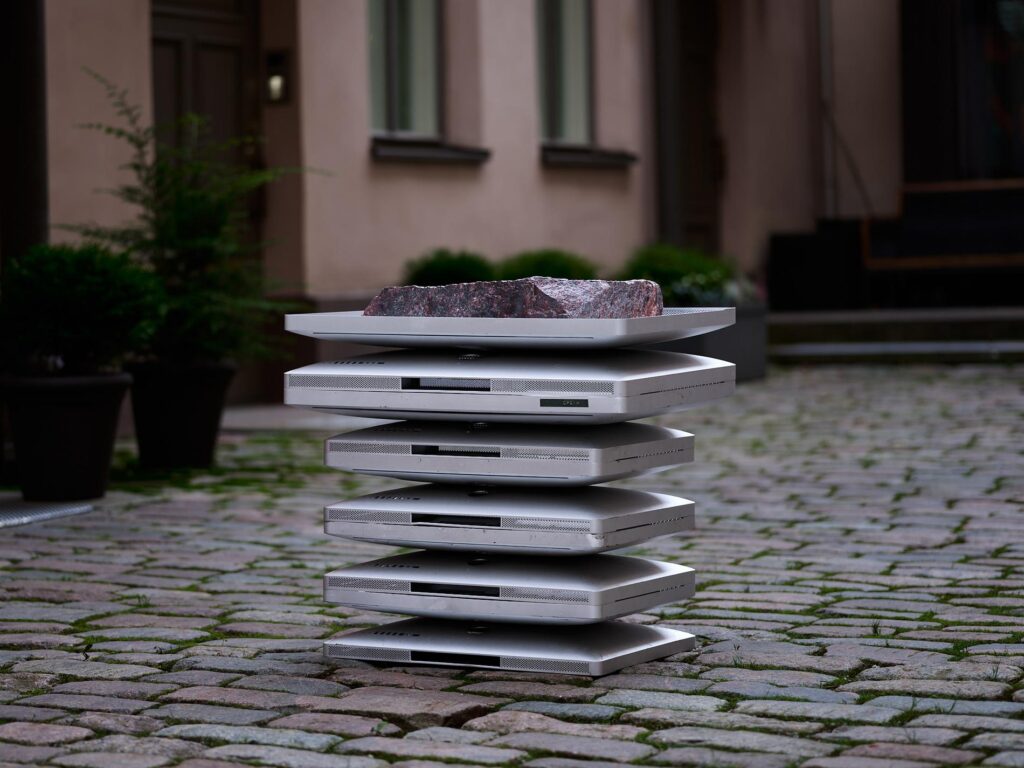
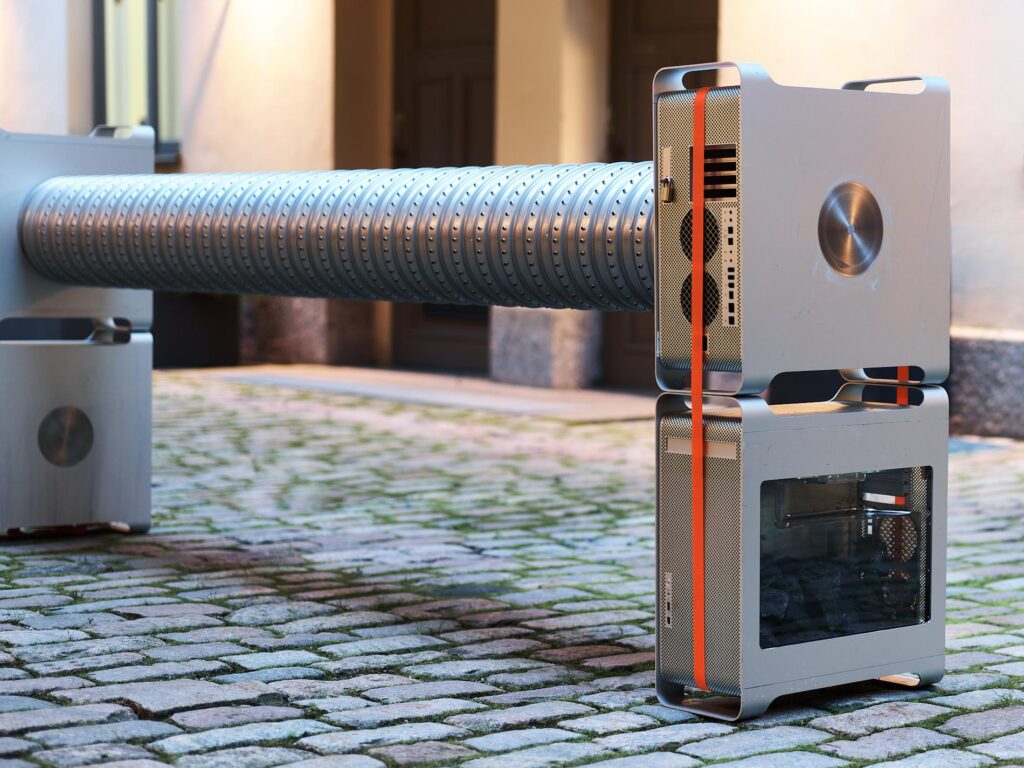
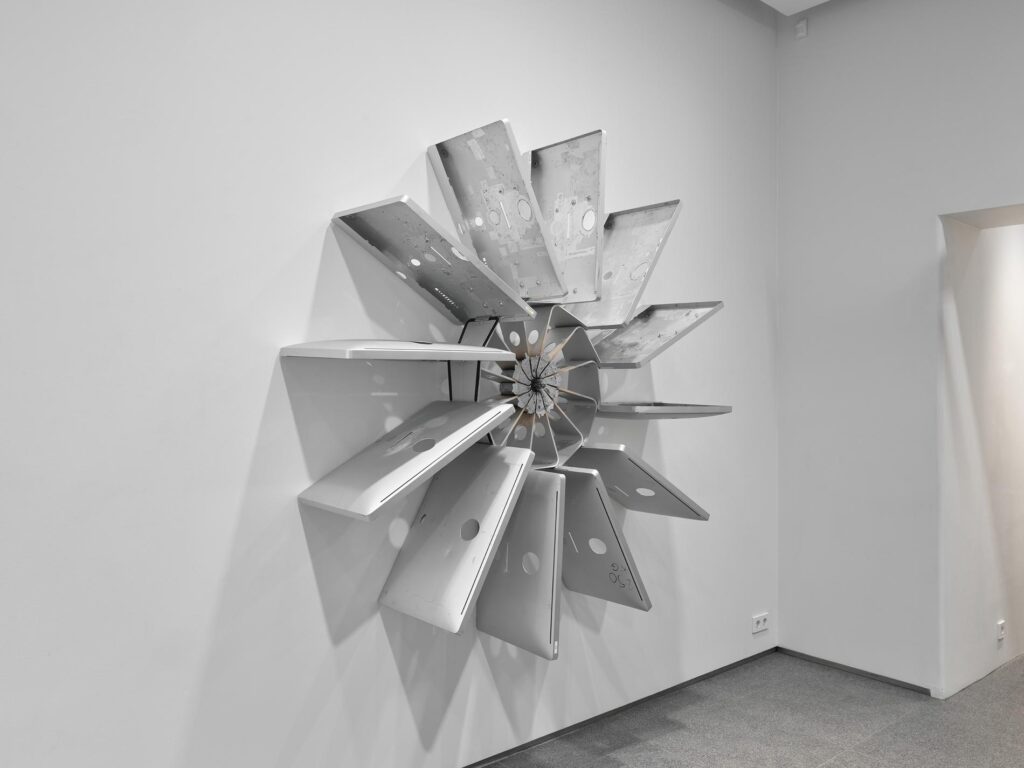
The Minerals of Extra
Erwin Laiho’s conceptual sculpting revolves around the interconnected ascent of materials from natural minerals to consumer and digital technology. Laiho explores the complex ontological relationship between matter, time, and the development of the universe. By transfiguring functional, digital devices, he strips them “of their pristine state of consumerist desire and physical autonomy in order to reveal an immanent vitality of the raw materials.”
Extra Terrestrial creates an idea of celestial bodies, life forms, and phenomena originating from our terrestrial environment. The sheer volume of hardware in the exhibition bluntly characterises the dominance of digital technology and the global internet infrastructures by raising concerns about their impacts. Laiho considers technology something fundamentally human. A part of our being. We create the world and our agencies with minerals. For the artist this is the main denominator ruling out the binary logic of both the human-nature and nature-technology dichotomies, as they for him are not elemental enough.
Working in the veins of Arte Povera and Mono-Ha, Laiho’s objective is not to obliterate the essence of the objects. Just the contrary. Ideally for him “what’s left are incredibly refined mineral materials with a palpable potential and an unobstructed honesty to them – much like their predecessors under our feet and in the night skies.” Whereas Laiho’s sculptural elements may have been built to serve only for a short second before the next hot design, the viewer of the artworks is placed on the deeper timeline of geology.
While the sculptures challenge the conventional ways we perceive our devices and subvert our spatial expectations, they engage in a very direct dialogue with the history and traditions of the medium of sculpture itself. The works feature existing, geometric elements that play with symmetry, balance, tension and the fundamental qualities that underlie the physical world.
Extra Terrestrial invites us to reflect on the profound ways in which silicon-based life forms shape our world and our relationship with it, challenging us to acknowledge how humanity exists in technology.
Text by Dr. Aura Seikkula
Erwin Laiho, Jani Leinonen, Riikka Hyvönen, Joonas Kota & Mari Keto
June 14–August 13, 2023
Zetterberg Gallery
Erwin Laiho, Jani Leinonen, Riikka Hyvönen, Joonas Kota & Mari Keto
June 14–August 13, 2023
Zetterberg Gallery
Erwin Laiho, Jani Leinonen & Joonas Kota
May 12-June 4, 2023
New works by Erwin Laiho, Jani Leinonen and Joonas Kota.
On show at Zetterberg Gallery from May 12-June 4, 2023
JANI LEINONEN
January 27–March 5, 2023
Zetterberg Gallery
THE MEANING OF A BULLET HOLE IN AN ARTWORK?
A bullet shot with a gun through an object is a mischievous target for interpretations. The act of shooting is so real, so violent, and so destructive in itself, that during these dark days, it is hard to see itas a symbol of anything else than the harsh reality we are witnessing. As we speak, bullets are piercing living bodies, destroying things and causing life-lasting traumas to people who remain alive in conflict zones near and far. The closer the bullet holes come to our home the more they shake our feeling of security.
Jani Leinonen’s new exhibition LOVE brings bullet holes really close, to the clean white space of Zetterberg Gallery in the center of Helsinki. All the artworks are pierced with real bullets – leaving a cracking hole in the glass and the art underneath. In the exhibition, the bullets have broken hearts and Coco Chanel No 5 perfume packages, and they have made cracks on otherwise soft birch wood panels. The bullet holes are the remnants of a deadly duel between two of the world’s most famous commercial mascots, and two recurring characters in Leinonen’s artistic oeuvre; fast food mascot Ronald McDonald and Kellogg’s Tony Tiger.
In Leinonen’s works the act of shooting is violence in itself but simultaneously a symbol of violence. According to philosopher Slavoj Žižek there are at least three forms of violence: subjective (crime, terror), objective (racism, hate-speech, discrimination), and systemic (the catastrophic effects of economic and political systems). Often one form of violence blunts our ability to see the others, raising complicated questions. These are the three levels of violence that Leinonen’s artworks play with.
